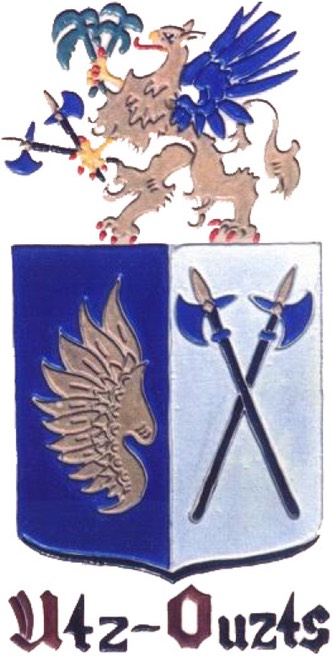The Utz family originated in the Duchy of Franconie which later became Frankfurt-on-the-Main of the German Empire. The family coat of arms, or crest (shown to the left), was granted in 420 AD and is of military origin. The winged griffin suggesting horsemen (calvalry) who swooped down with a tremendous impetus on their enemies and when forced to dismount, fought back to back valiantly, which is suggested by the battle-axes so placed, and mentioned in history.
From “Reitstap’s Armorial General”, Volume 6, United States Library of Congress:
“Utz-Franconie. Divided—The one part is of blue with a half-wing imposed of gold; the second part is silver with two halberds (or battle-axes) as they naturally appear, passing crosswise; crest: a gold griffin coming up blue-winged, holding in his right paw a palm of single and in his left, the halberds of the second part."
Mr. Louis P. Selden, noted heraldic artist of Richmond, VA, related to Daniel Andrew Gaines (DAG) Ouzts, his understanding of the Utz coat of arms thus:
“This is a very interesting coat of arms and an honorable one, of which an Ouzts or Utz can always be proud. The colors and charges employed in blazoning this heraldic achievement have an ancient significance. The gold wing on an eagle was givin for illustrious deeds and generosity and purity, magnanimity and fortitude. Wings conjoined or separate has been referred to one learned in war, who was thus prevented from fully asserting his powers. The battle-axes indicated a crusader ancestry."
He continued:
“We have every reason for family pride. Generations come and go; and passing with each, the name remains and lives on. We cannot choose our ancestors, but we can leave an impression on our descendants which is an important part of the average person . . . It is our duty to add to the name we bear, to lift it up and honor it."

